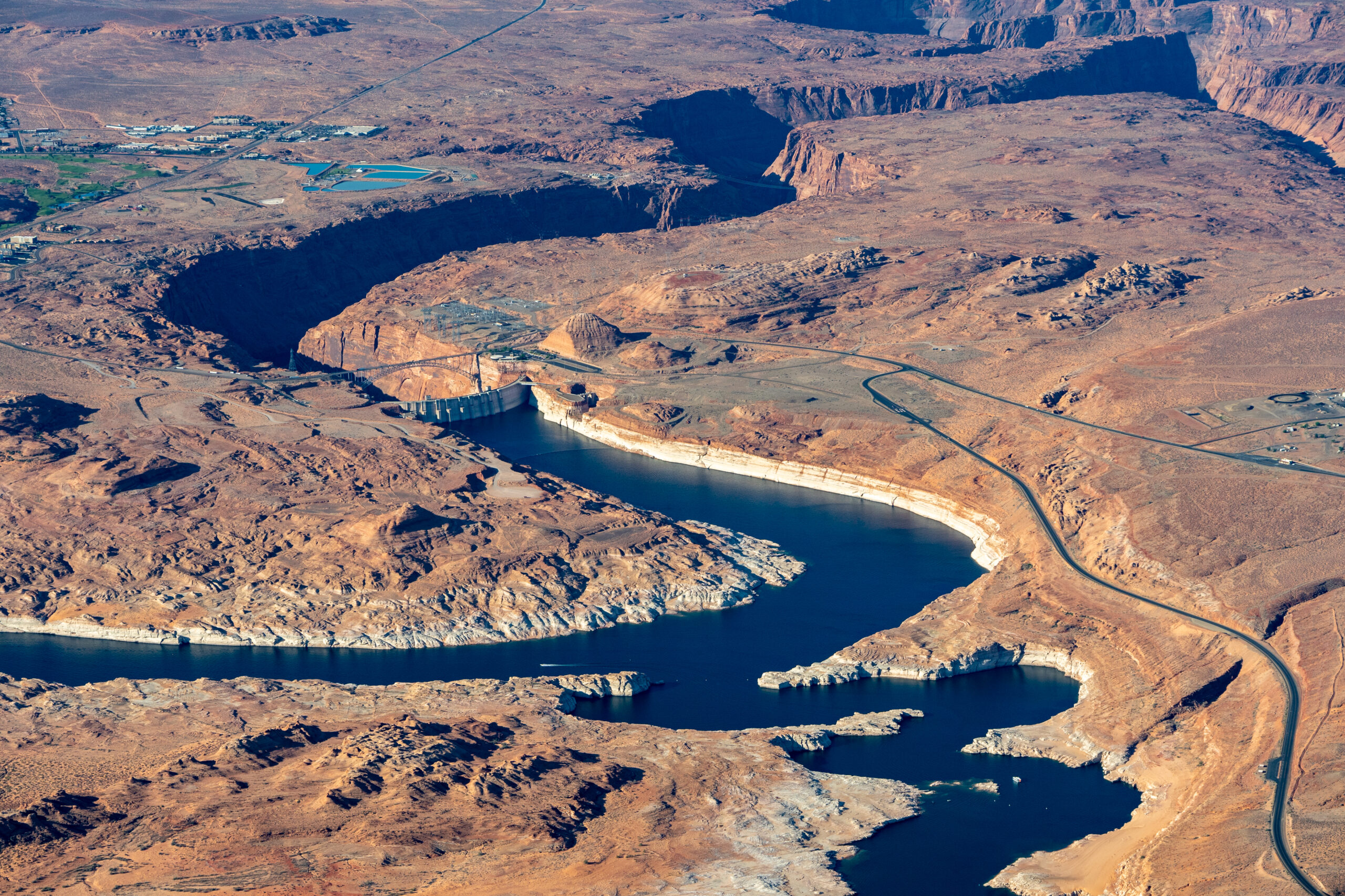“If the year that we’re working within is hot and dry, there is more crop demand than if we have storms within the year,” said Jeremy Dodds, who helps account for water use at the U.S. Bureau of Reclamation, the federal agency tasked with managing the delivery of Colorado River water.
In a recent letter first reported by the Arizona Daily Star’s Tony Davis, federal water managers warned the states that they are considering an emergency action that could accelerate the decline of Lake Mead. They are proposing to keep more water in Lake Powell, which is held back by Glen Canyon Dam upstream. Lake Powell and Lake Mead work together in tandem.
By keeping more water in Lake Powell, federal officials would release less water downstream to Lake Mead than expected. The move is intended to keep Lake Powell stable, providing a small window of relief to the system. But it comes with a cost: Such a move would lead to the further decline of Lake Mead, potentially making the risk of deeper, short-term water cuts more likely.
In addition to the action resulting in Lake Mead dropping roughly 7 feet lower, it could also have an impact on the hydroelectric power produced at Hoover Dam. In California alone, the cost of replacement power could be about $5 million, said Bill Hasencamp, the manager of Colorado River Resources for the Metropolitan Water District, which serves most of Southern California.
:this-is-fine:



We’ve seen it with COVID in real time